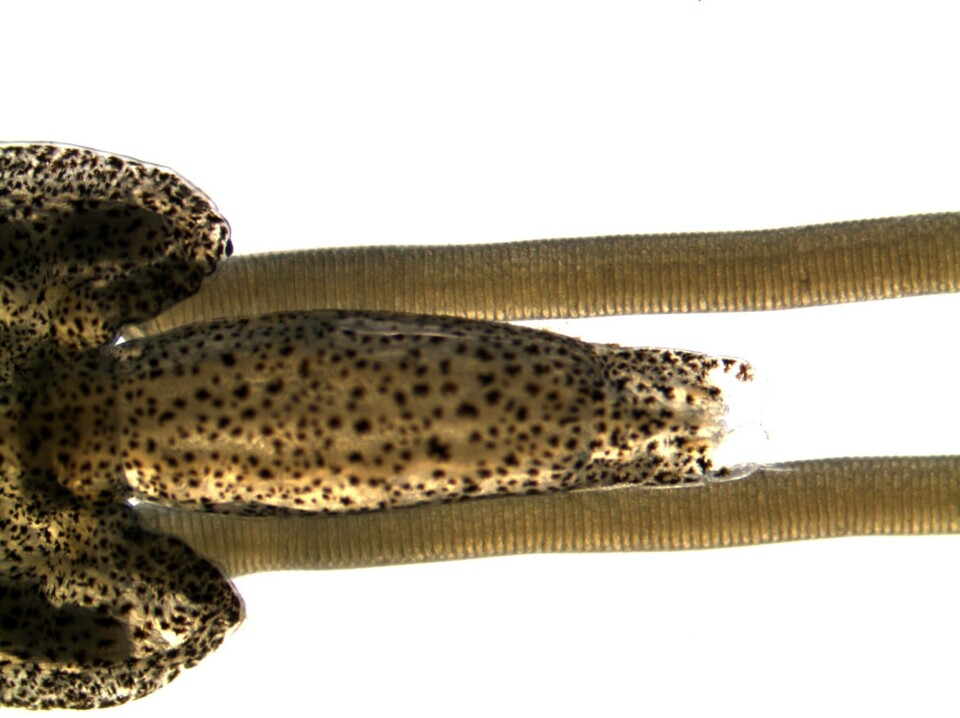
Egg strings released by stressed lice may explain infections, say researchers
Salmon farming has too little knowledge of what is happening with egg strings being released by lice and to what extent these contribute to the general infection picture at fish farms.
That’s the contention of Lionel Eisenhauer and colleagues at Norwegian research company Sintef Ocean, who point out that treatment measures undertaken against lice in cages or aboard a boat not only contribute to increased stress of salmon but also stress the sea lice.
“In such situations, the female lice will be able to drop the egg strings as a reaction to stress, as a strategy to increase the survival rate of offspring,” they write.
In experiments at Sintef Sealab the researchers have seen that the difference in the rate at which the egg strings sink gives information on how large the dispersion potential will be in the sea under different current conditions.
“Egg strings are a source [of lice infection] that is not taken into account in today's salmon lice models, which may help explain some of the variability of some infectious events and the general infection pressure,” they claim.























































